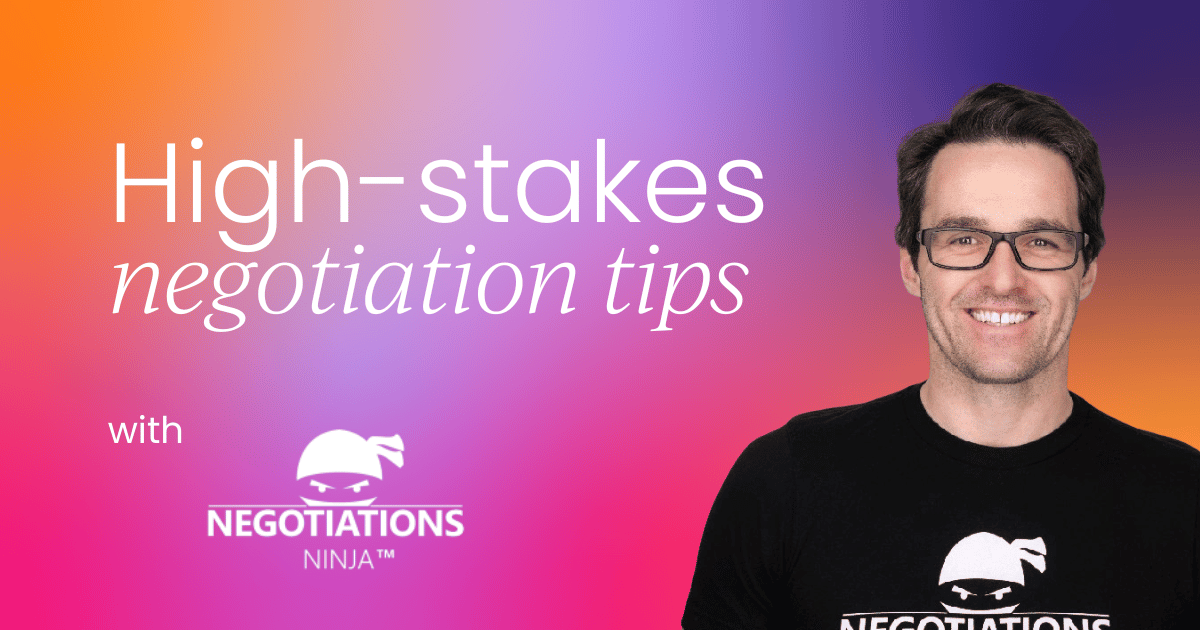How many times have you been on the verge of closing a deal, only to have it stall at the last minute?
As a Chief Revenue Officer, you know exactly how frustrating it can be when everything seems aligned – there’s a champion on your side, the budget’s approved, and the solution fits. But despite all of that, deals still get stuck in the final stretch.
Today, closing those bigger deals has never been harder. It's not about struggling to generate leads or book meetings – those pieces are usually in place. The real challenge lies in the negotiation stage. If your team isn't equipped with the right negotiation strategies, those deals can slip through your fingers, even if they're already in the bag.
I'm Mark Raffan, CEO of Negotiations Ninja, and I’ve helped some of the world’s largest organizations – including Salesforce, Citibank, and Visa – navigate these very challenges.
So in this article, I’m going to be sharing insights on how you, as a CRO, can close bigger deals faster by mastering high-stakes negotiation strategies and turning your team's negotiation skills into a key revenue-driving capability.
Let’s dive in.
The core of the problem: The dreaded late stages
Let’s talk about what’s really going wrong in your sales process. Deals aren’t being lost in discovery or pipeline generation. They’re being lost in the final stretch – at the negotiation table.
Here’s the kicker: According to Forrester, 74% of deals stall in the late stages, and that’s where the big revenue slips happen. You’ve got a champion in place, the budget’s set, and the solution fits. But something’s still holding the deal back.
Most of us – myself included in my earlier career – get caught up in obsessing over the top of the funnel. We track meetings, the number of calls, and the pipeline generation. But let’s be honest: If you can’t close the deal, then none of that matters. The last 15% of a deal – where the actual negotiation happens – makes or breaks the sale.
The discounting dilemma
I’m sure you’ve faced this: you’re just trying to save the deal, so you offer a discount. But here’s the issue: discounting isn’t a strategy – it’s a symptom. It’s a sign that your team isn’t equipped with the right negotiation skills.
And when you discount, you hurt your margins. The average deal discount is 10%, but I’ve seen it much higher. In my experience, some organizations are discounting by 50% or more.
Now, think about that over 100 deals – it’s millions in lost margin. Sure, it doesn’t seem like much in the moment, but the cumulative effect is huge.

Creating a strategic revenue capability with negotiation skills
So, what’s the solution? You need to start treating negotiation as a strategic revenue capability – not just a soft skill. Negotiation should be a core part of your sales process, and here’s why:
If your sales teamin doesn’t know how to negotiate, they’ll flounder when it matters most. Negotiation is about more than just securing a deal – it’s about maximizing revenue and reducing risk.
It’s not about conceding to every buyer's demand. It’s about understanding where to push back and where to trade value. If you don’t arm your team with the tools to handle this, you’re in for a rude awakening – especially in today’s economic climate.
One of the most effective ways to improve negotiation is by building a margin intelligence layer. This sounds like a mouthful, but it’s simple: you need to track and analyze your discounting data to uncover trends.
For example, who’s discounting the most? Which products are being discounted the most? And against which personas? This kind of insight helps you identify where your sales team is panicking or conceding too quickly.
It’s like finding leaks in your revenue pipeline, but this time, it’s in the back end, during negotiations.


 8 min read
8 min read
 Follow us on LinkedIn
Follow us on LinkedIn




